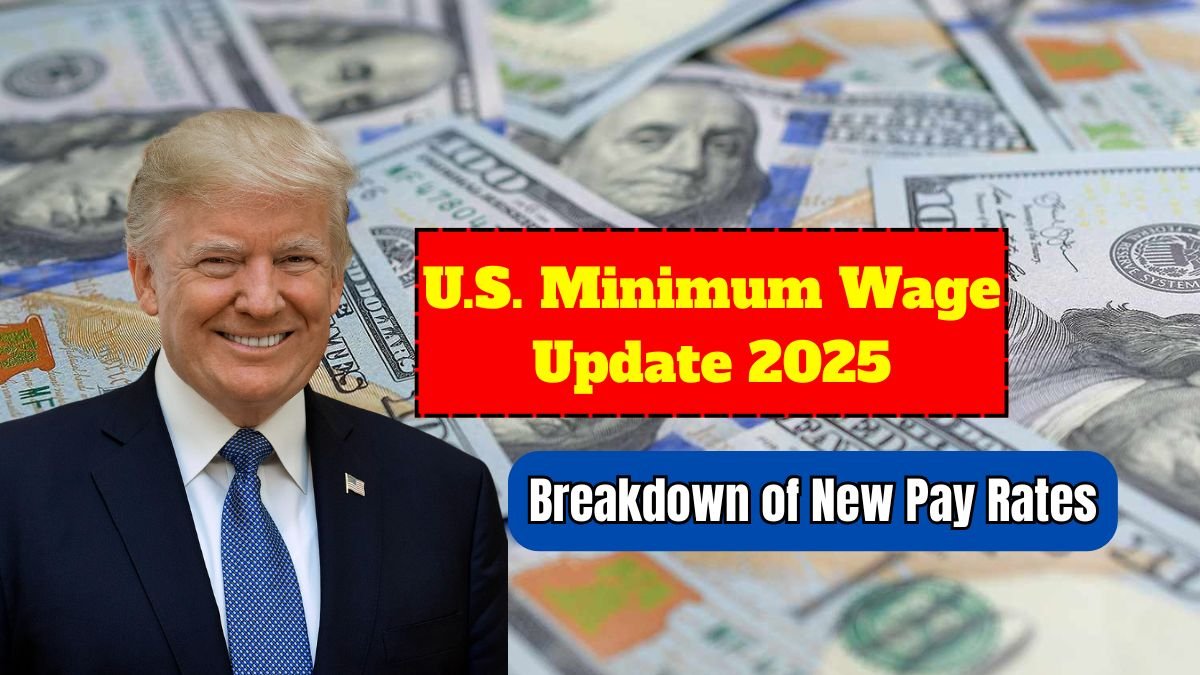The least rate at which a worker is compensated reflects the ‘minimum wage,’ which ensures that all workers are paid equal and fair wages for their inputs. The attempts have been quashed by the Australian Federal Government to increase the minimum wage amid appeals from Americans. Some areas have responded with a worrisome silence regarding the wage hike while other states have considered raising it. As a result, the variance in income distribution across states has been too glaring.
Under the Fair Labor Standards Act, the current federally protected minimum wage stands at $7.25 per hour.
Increased Minimum Wage for USA till 2025
Every worker yearns for being paid justly for all work hours he/she puts in. In the U.S., minimum wage had its existence from 1938, established by the government, and was standard practice, as stated in the law. The first minimum wage was officially 25 cents per hour.
Although some states like Massachusetts introduced the minimum wage related to women and children as early as 1912 well before FLSA came into existence, yet even they remained included under this new law, provided there would be a minimum-wage order. Mandatory are fair wages per working hour.
Minimum Wage Increase USA 2025
| Field | Details |
|---|---|
| Agency | U.S. Department of Labor |
| Article Subject | USA Minimum Wage Increase 2025 |
| Country | USA |
| Beneficiary | American Workers |
| Objective | Improvement of Living Standards |
| Minimum Wage | $7.25 per hour |
| Category | Government Aid |
| Official Website | https://www.dol.gov/ |
Overview of U.S. Minimum Wage Increase
On account of the fact that the minimum wage is a federal stipulation set at a fixed rate, scores of cities have nevertheless attempted to vary the rate higher. This gave rise to inequality in state-by-state income. That is when the federal sort-of-thing emerged again: the wrath of the federal government ripped mercilessly between the minimum wage of the state and the federal minimum wage.
Increased Minimum Wage is against exploitation and gives each worker a fair wage in exchange for labor. Per hourly wage, FLSA called for a minimum-wage rate of around 25 cents. This rate is now $7.25 per hour since 2009.
Understanding the Fair Minimum Wage Act
Concerning Fair Minimum Wage Policy is the Fair Labor Standards Acts, which set out rules as a segment of U.S. labor law for the minimum hourly wage that employees should be paid. Therefore, as the present state of the law is obtained, the $7.25 figure stays put.
This sets forth that any time the employee works beyond eight hours, he shall not receive additional benefits as per the Fair Labor Standards Act on minimum wages. These shall designate the Non-Exempt Employees.
As regards tipped employees, the base or minimum wage is therefore $2.13 each. However, the worker’s tips and their wages per hour should equal the minimum wage; however, again, there are some fields and categories that operate quite differently from this standard.
Varied Table of Minimum Wage Rates of U.S. States
| State | Wage per Hour (USD) |
|---|---|
| District of Columbia | $17.50 |
| Washington | $16.66 |
| California | $16.50 |
| New York | $16 |
| Massachusetts | $15 |
| Illinois | $15 |
| Maryland | $15 |
| Connecticut | 1476.05 |
| Colorado | $14.81 |
| Arizona | $14.70 |
| Oregon | $14.70 |
| Florida | $13 |
| Texas | $7.25 (same as federal) |
Possibility of Increase in U.S. Minimum Wage
The alarming unease of American workers led to the government giving birth to the “Raise the Wage Act of 2025,” raising the minimum wage from $15 to $17 gradually over ten years, starting in 2025 and ending in 2030.
The Act seeks to safeguard minimum-waged industries from any adjustment and will protect all service workers and tipped employees. An end is also set to the access of individuals with disabilities to lower wages under the Subminimum Wage Certificate. This is done in order to foster equal and competitive opportunities to work for one and all.
The Significance of Increasing the Minimum Wage
With the cost of essential commodities skyrocketing, there is no time better than now to increase the minimum wage since the step would mean families are saved millions of dollars through poverty eradication in addition to increasing consumer purchasing power.
Practical Benefits of Increasing Wage
Consumer purchasing power increments with opening up of higher wages, heightening economic compliance.
Therefore, as the boon approaches, there would always be a richer middle class and a poor class that works less.
An outcome of the wage hike will be increased tax collections by the government.
The formal sector will see an improvement in workers’ living standards, which will spur the improvement of health care.
The increase in the minimum wage will lead to an improvement in the living standards of workers with consistency and, in essence, the stabilization of the nation’s economy. This is one of the biggest steps toward achieving mixed economic security and a decent life for every American citizen.
Conclusion
Raising the minimum wage in the US in 2025 does not only put an economic reform in place but also marks social responsibility that ensures every worker earns an equitable pay for labor and lives with peace, pride, and dignity.
This initiative will uplift the economic plight among workers but will also advance the cause of parity and stability in society. Furthermore, heightening the wage would build a sturdy base for the economy, where all workers get their proper worth for their rightful toils in the future.
FAQs
Q1. What is the current federal minimum wage in the USA?
A. The current federal minimum wage in the United States is $7.25 per hour, as set under the Fair Labor Standards Act (FLSA).
Q2. When will the new minimum wage increase take effect?
A. The proposed Raise the Wage Act of 2025 aims to gradually increase the federal minimum wage starting in 2025 and reach $17 per hour by 2030.
Q3. Will all workers benefit from the wage increase?
A. Yes, the increase is intended to cover all workers, including service and tipped employees, ensuring fair and equal pay across all employment sectors.


